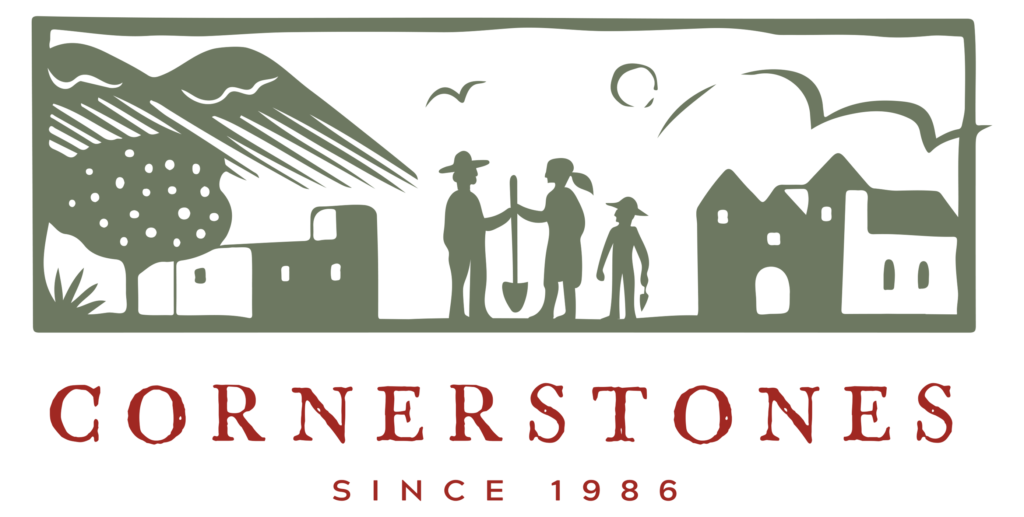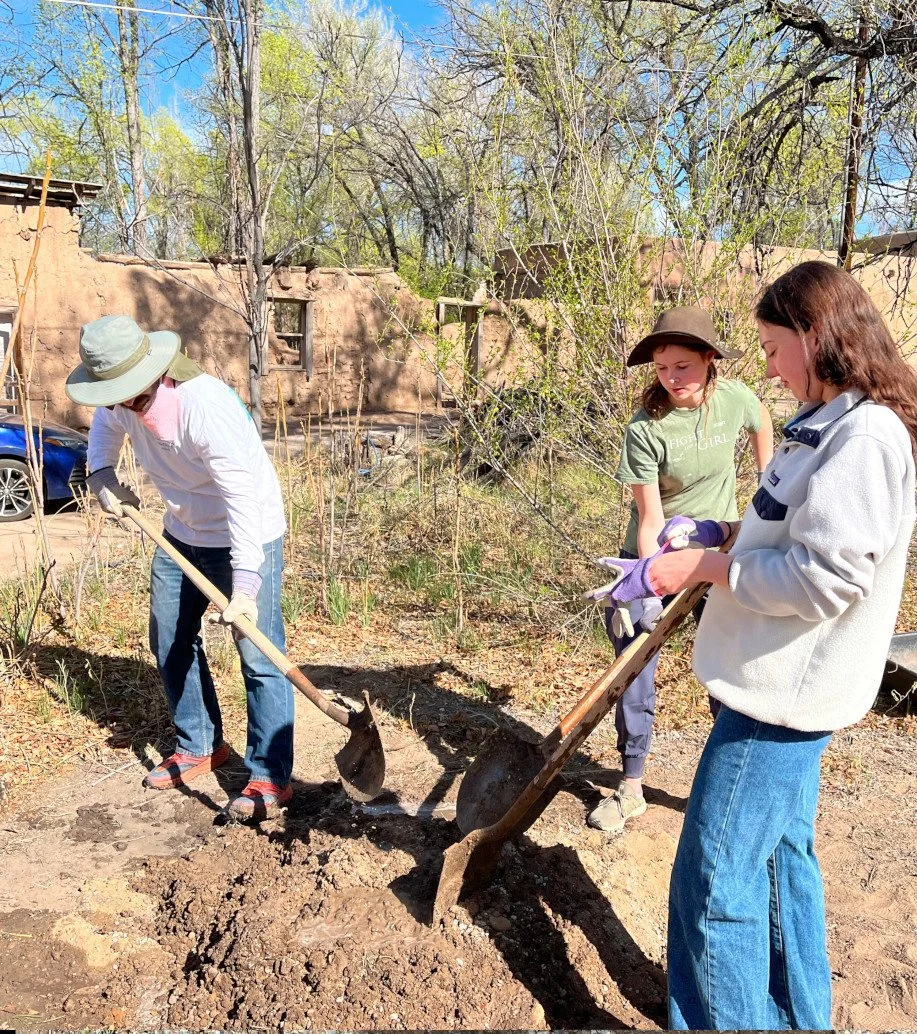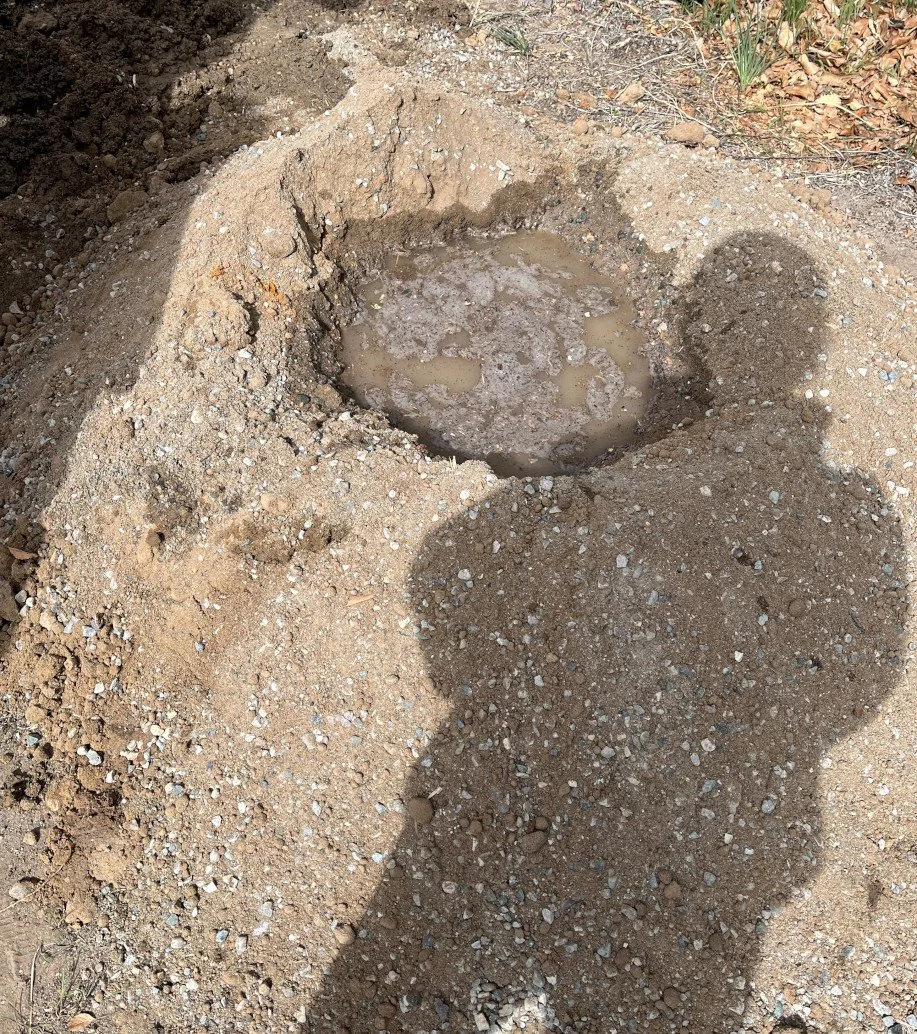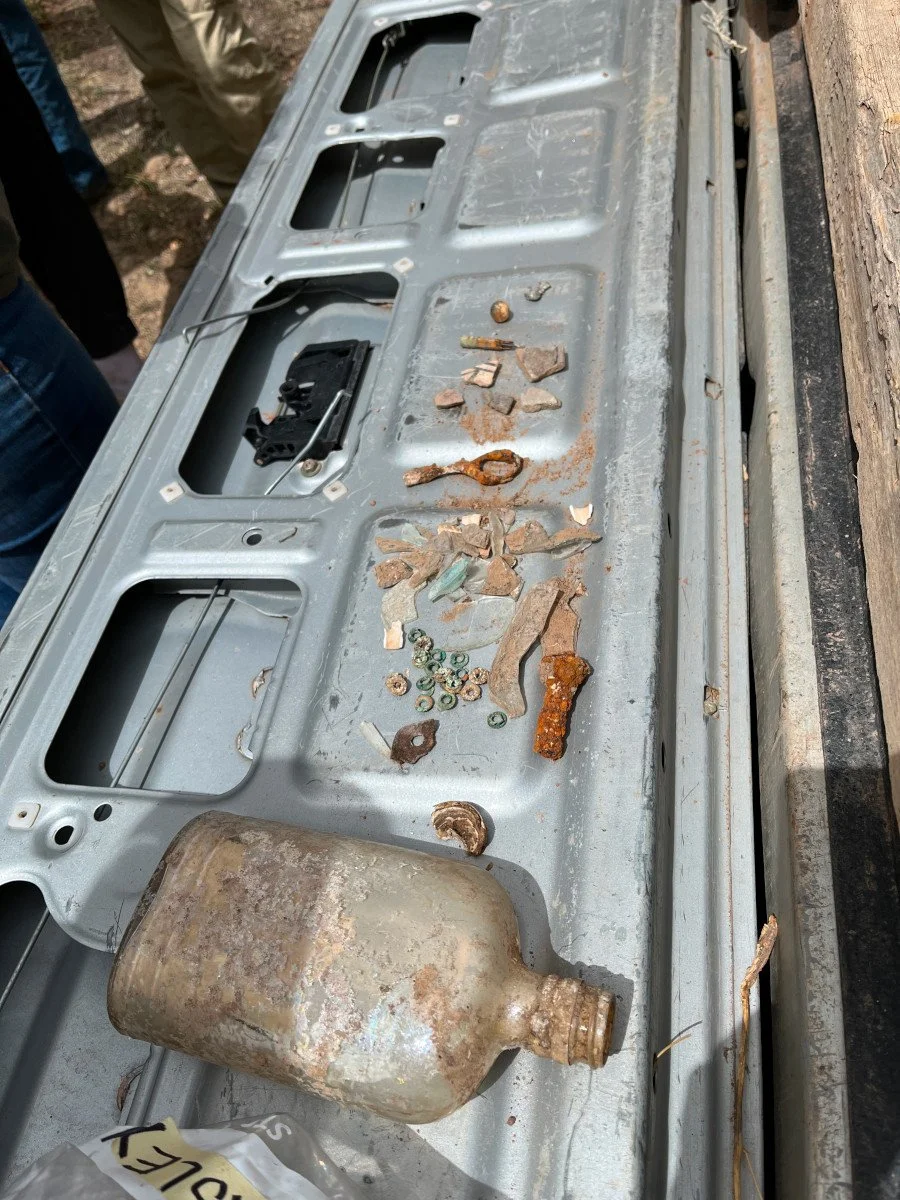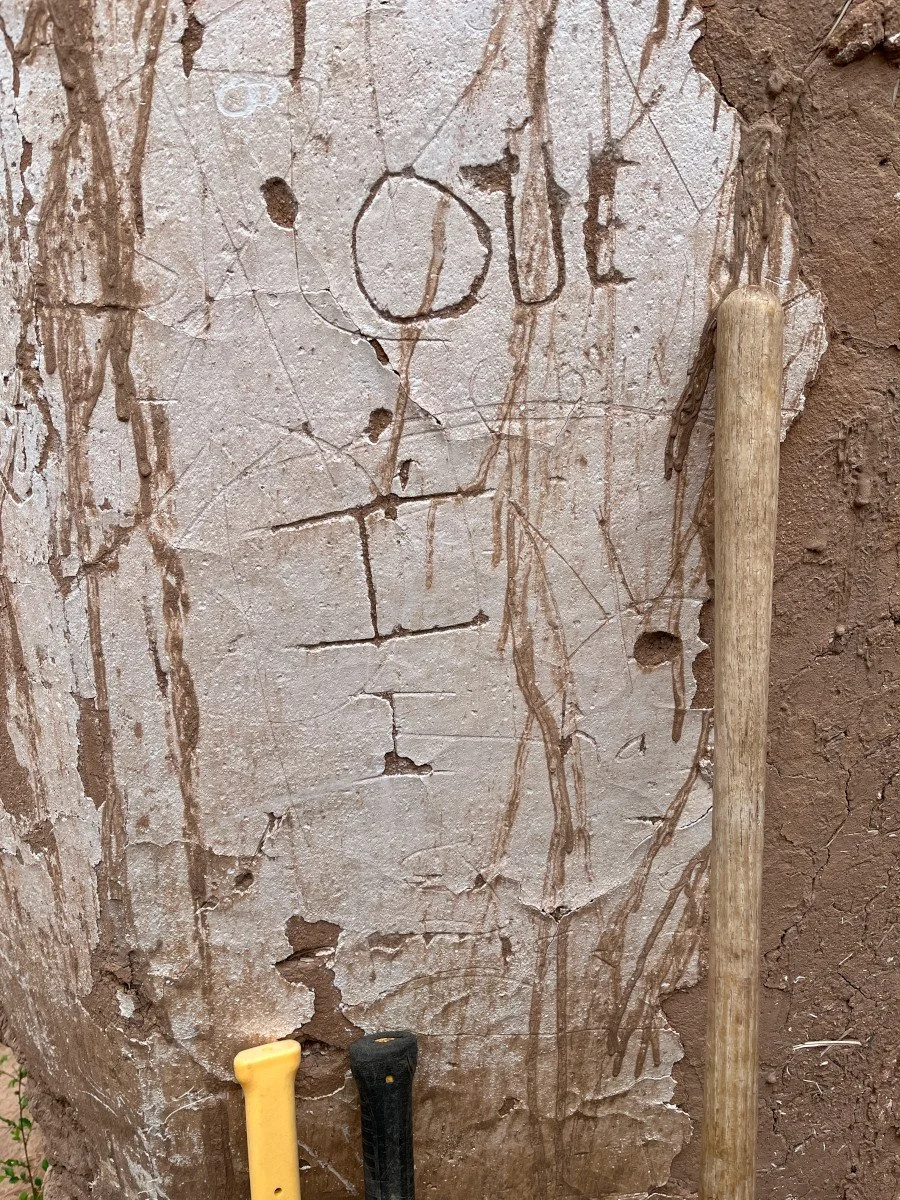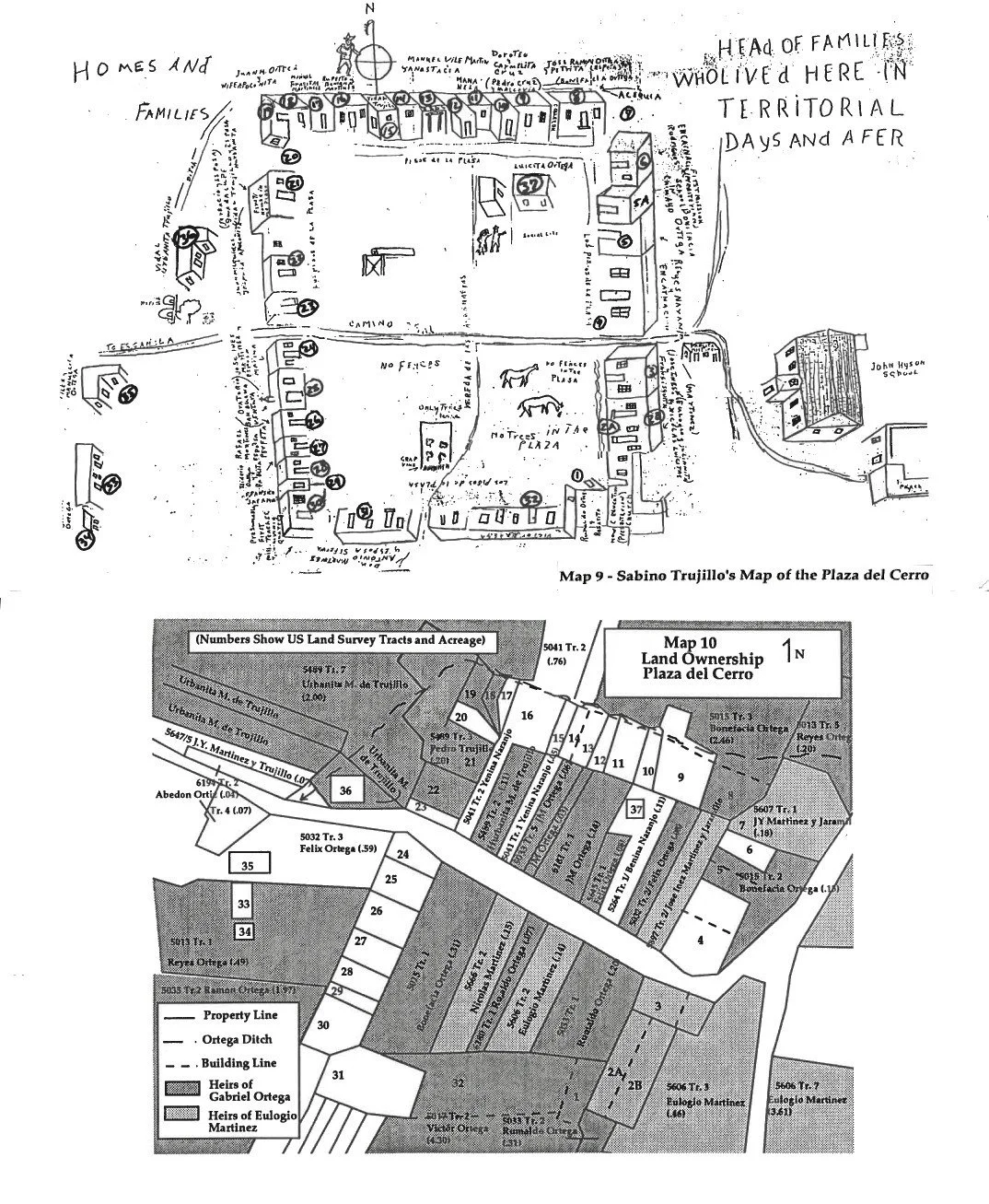Last week, I spent an invigorating day at Plaza del Cerro, Chimayo. There students from Wellesley, Massachusetts’ Village Church volunteered during their spring break. Cornerstones has been honored to be one of their host organizations for nine of the last eleven years.
The students participated in two projects. One group practiced traditional adobe brickmaking. Instead of using an electric mixer, they combined sand, straw, and clay and then used the “volcano method” to work the water into the dirt. The kids really got into it. They removed their shoes, rolled up their pants and mixed the adobe by stomping around in it in their bare feet. At one point, I heard enthusiastic singing. The kids were serenading themselves as they mixed the mud with their feet. Oh the energy of teenagers!
The bricks the Wellesley kids made will go to rebuilding Casita Desiderio y Pablita Ortega, made in forms that match the size of the original bricks. Plaza del Cerro is one of the oldest occupied landscapes of its type remaining in New Mexico. Within it, the Casita Desiderio is one of the most deteriorated of the plaza houses. Saving, rehabilitating, and restoring it to a livable condition with modern conveniences will more fully restore the community space encompassed by the rich cultural heritage of this special landscape.
Another group of Wellesley students worked with our project archeologist Charlie Haecker inside Casita Desiderio y Pablita Ortega. This activity had an exciting discovery moment. During the excavation, Charlie and the students located the fireplace of the casita. Charlie explained to the students how the wall joins, as well as the animal bone they found indicated a fireplace to him. The kiva fireplace explains how the house was heated in winter time. Remnants found indicate the original design, making reconstruction possible. The students on the archeology team worked as hard as the brickmakers. A fast-growing cottonwood tree has taken up residence inside the casita. Some time ago, a section of the metal roofing fell and the tree grew into it. Several of the students worked, and worked, until they could remove it.
Our Chimayo host was Victor Archuleta, Board President of the Chimayo Cultural Preservation Association. Victor’s roots in Chimayo are so deep that when one of the students asked him if any of the pictures at the Chimayo Museum were of his ancestors, he paused briefly as he glanced around and replied, “they all are.” He gave the students a traditional history as well as a personal account of what it was like to grow up in Chimayo. The students and I noticed letters carved in one of the walls at Casita Desiderio. With a boyish grin, Victor told us how sometimes when you were a kid, the pristine white walls were so tempting, you drew on them with a nail.
Victor led us through a small gap between two buildings. In its original form, Plaza del Cerro was a defensive plaza. By design, access was limited to two or possibly three alleys only wide enough for one person to walk through at a time. The narrowness of the passages made them defensible against attacks from outsiders. A small road was cut from west to east across Plaza del Cerro in the nineteenth century. While the road makes access easier, today it makes it difficult to imagine the Plaza as a closed off space. The experience of walking in this short but close passageway between thick adobe walls gave me a sense of this plaza as fortified space.
Beyond Casita Desiderio, there are other improvement projects going on at Plaza del Cerro. In one of the land plots in the center of the Plaza, high school students from The Academy for Technology and the Classics in Santa Fe cleared the soil, dug an irrigation ditch, and will return to scatter seeds for flowers. Victor was delighted to discover that several of the neighboring lots had been tidied up as well, perhaps after seeing the work in a nearby area.
These land plots are another part of what makes Chimayo’s history so fascinating. Families that owned the properties that ringed the plaza had plots of land inside the plaza on which they grew fruits, vegetables, and other crops. The farmed, segmented center was part of how the original community designed for fortification. Areas of the land remained under cultivation until the 1950s. Today, some of those plots are somewhat overgrown. Through the work of Victor, the Chimayo Cultural Preservation Association, and the groups they partner with, Plaza del Cerro is being revived.
Image credit: Don Usner, The Plaza del Cerro in Chimayo: Settlement and Function, University of New Mexico, Center for Regional Studies #104, Spring 1994
There is much more to say about the fascinating history of Plaza del Cerro. Our team has written several articles about Plaza del Cerro already. Check out our previous Mud Blasts here. Better yet: make a visit to Plaza del Cerro and check out the Chimayo Museum yourself: https://www.newmexico.org/listing/chimayo-museum/754/.
